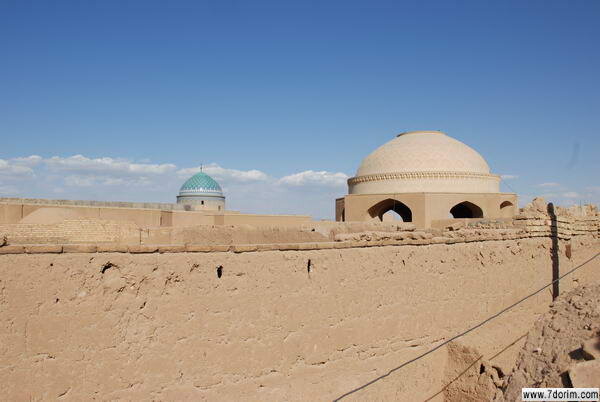A Jewish pilgrimage: Harav Oursherga shrine in Yazd

Yazd is a historical city that has attractive sights for tourists, especially for experts in architecture, design, and photography. A UNESCO World Heritage, Yazd embraces countless mudbrick wind-catchers; historical places such as Dolatabad Garden, which has set the record for the tallest wind catcher in its name; Zoroastrian fire temples; cisterns; Qanats (water underground channels); and Yakhchals (dome-shaped subterranean structures for ice storage) to name a few.
The synagogues and shrine of Harav Oursherga is another travel attraction of the ancient city, named after the Iranian religious scholar and mystic who lived during the Qajar period. Oursherga was a Sabzevar Jew who moved to Yazd with his father as a child.
The monument is one of several Jewish shrines in Iran that has always been respected by other compatriots and shows the roots of the Jews in this region, peaceful life with non-Jewish compatriots that are several centuries old.
Because of his great knowledge in the field of Torah and Kabbalah, he was noticed and loved by the Jews of Yazd. Many virtues have been narrated from him. Harav Oursherga died in 1172 Sh. based on the Persian calendar, coinciding with the 28th month of Heshvan the year 5554 Hebraic period, and his tomb in Yazd is pilgrim by Jews, especially every year on the anniversary of his death.
Every year, with the arrival of November, on the occasion of the anniversary of the death of the rabbinical scholar Harav Oursherga, a large number of Kalimids or Iranian Jews from different cities of Iran depart to Yazd to pilgrim the tomb of Harav Oursherga every year.
Harav Oursherga is said to be the one hundred and thirty-fifth descendant of the lineage of Prophet David, and although more than two hundred years have passed since his death, he is well known among Jews and Gentiles. He is considered one of the greatest Jewish religious authorities of his time and has been and is highly respected by Jews and non-Jews due to his virtues and extensive knowledge of Jewish mysticism (Kabbalah).
In the week leading up to the day of Harav's death, the Jewish residents of Yazd receive many guests from Tehran, Shiraz, and Isfahan. Some people personally take the pain of travel and go on pilgrimage, but many people also go on pilgrimages with travel tours that are more active in the community.
In the past, more Jews lived in Yazd and engaged in business and livelihood alongside other compatriots, but today very few Jews still live there and still resist immigration to the capital. But the presence of this small number has kept the central synagogue of Yazd afloat.
The tombs of Harav Oursherga and his sons are located in a large garden full of olive and pine trees. The architecture of the building is traditional and beautifully designed, and its color is cream and brown like most of the buildings in Yazd. Due to the small space inside the tomb, pilgrims are forced to enter and perform the pilgrimage in order. There is also a special room where pilgrims light candles and ask for their needs.
Dr. Seyedhossein Hosseiniseddiq is a faculty member at the Islamic Azad University
AFM/MG
Leave a Comment